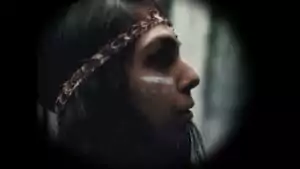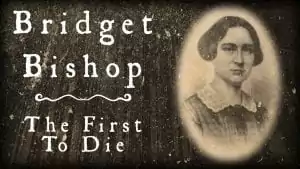This page is currently under construction. Please check back later for increased functionality and content.
The Salem Witch Trials
The Salem Witch Trials officially began in February of 1692 and ended in May of 1693. The trials took place in and around contemporary Salem, Massachusetts and resulted in the accusations of more than two hundred people, twenty direct deaths, and a handful of indirect deaths. Below you’ll find everything you want to know on the Trials, from a general overview of what happened to complete breakdowns of every victim and accuser in the trials. But this in-depth analysis is only the beginning. Check out our YouTube channel for the most wide-ranging content on the internet related to The Salem Witch Trials and witchcraft in general.

Salem Witch Trials in Five Minutes
In a hurry? Looking for some quick one-liners for that history paper? Just read the Crucible and are dying (preferably not because your village is trying to kill you) to learn more? Here’s a collection of must-know tidbits from the Salem Witch Trials that you can gobble down in 5 minutes or less!

The Salem Witch Trials | Tituba
Tituba is one of the most misunderstood people connected to the Salem Witch Trials. In this series of videos, I explore Tituba’s entire life.

The Salem Witch Trials | Bridget Bishop
Bridget Bishop has been relegated to the set of familiar names connected to The Salem Witch Trials, but few know her story. Today, I’d like to change that.
The Story
The Story of the Salem Witch Trials
While witch trials were a common occurrence elsewhere in the world, the first American trials didn’t occur until 1655, nearly forty years prior to the ones in Salem. In 1688, Ann Glover is accused of and executed for witchcraft in Boston. At the time, Samuel Parris was in Boston with his slave Tituba.
The following year, Parris moved to Salem to become the reverend of the newly establish Salem Village church. For the following two years, Parris would struggle to establish authority over his new congregation who seemed to house mostly people who loathed each other. His sermons from the pulpit became exceedingly ominous. He preached of evil hidden within Salem Village and of townspeople in league with the devil.
While Parris is certainly a huge reason for the tensions that ultimate erupted into the Salem Witch Trials, he isn’t the only one. For some six decades prior, a war with an alliance of Native American tribes had been underway, having only officially concluded a few years before the beginning of the Trials. This ongoing conflict, known as “King Philip’s War” remains the bloodiest war per capita in United States History.
Also adding to the tension in 1692’s Salem was a severe drought the summer prior which contributed to lower yields and food shortages. This was followed up by an infamously brutal winter in 1692, which is when the girls’ fits and accusations began.
In January of 1692, Elizabeth (Betty) Parris, Samuel Parris’ daughter as well as his niece with whom he shared his home, Abigal Williams, began behaving strangely. At first, their behavior was odd, but not harmful. It quickly escalated, however, and by the following month, folk tests for witchcraft are conducted to determine if a supernatural cause is at play. When these remedies return satanic results and a doctor officially diagnosis the girls as having been bewitched, the number of girls having the fits increases to include Ann Putnam, a daughter in one of the most powerful families in the region, and Elizabeth Hubbard.
By March of 1692, the girls are vocally accusing three women: Sarah Goode, Sarah Osborn, and Tituba. The first two are outcasts who were generally despised by most people in the community. The third, Tituba, is Parris’ slave.
The first week of March saw the beginnings of the Trials in earnest. Tituba shocked the Salem community by not only confessing to witchcraft, but implicating powerful members in the Salem Village community. While she didn’t directly tie any of these elites by name, Tituba’s confession established the precedent that anyone could be accused at any time and that no one would be above the court’s justice. All three women were found guilty and taken to jail.
By April, some twenty-five more people had been accused and several imprisoned. The key component to the legality of these arrests was the allowance during the hearings and later trials of something called “spectral evidence.” This particular type of evidence made dreams, visions, hallucinations, and other subjective and personal accounts of supernatural events as weighted in court as material events. This legal distinction is what allowed the court to arrest, and ultimately kill, whomever they pleased.
Among the group that had been imprisoned by April was Village and church elder Rebecca Nurse who, because she was going deaf and could not actually hear the accusations leveled against her during her hearing, was horrifically sent to her death by the very congregation she had striven to enliven for years prior. During Rebecca Nurse’s trial, Sarah Goode’s four year old daughter is also put on trial and convicted. She was the youngest of the convicted. She survived the trials, but lived a horrific life afterwards due to her inhuman treatment in prison and the trauma of having been involved at all.
By the time the official court that would overhear the trials was created (the court of Oyer and Terminer) in the summer of 1692, some sixty people were imprisoned and one, Sarah Osborne, had died in captivity. On June 2nd, 1692 Bridget Bishop, one of the incarcerated, is ordered to be hanged. She was killed eight days later.
From Bridget’s death in June until September, many more Salem Villagers are tried and put to death by hanging and one, Giles Corey, was tortured until he died in an attempt to coerce a confession.
In the autumn of 1692, Massachusetts Governor William Phips returned to the area after some time abroad in Maine. By the time of his return, twenty people had been killed by the Court of Oyer and Terminer. Several high profile people outside of Salem had also been accused, reportedly including Governor Phips’ wife. While it’s true that Phips’ earlier decisions were at least partially responsible for the trials being allowed to get as far as they did, as they progressed, Phips expressed no small amount of discomfort with the way events were unfolding. And so, in October of 1692, Governor Phips ordered that imprisonments for witchcraft must cease, then he dissolved the court of Oyer and Terminer and replaced it with another. This new court would not allow the use of spectral evidence.
The rest of the accused are tried by this special court. Those who had not been killed by the court of Oyer and Terminer but had been found guilty were reprieved by special order from Phips himself. It wasn’t until May of 1693 that Governor Phips ordered the release of the remaining accused witches from prison. This event signals the official end of The Salem Witch Trials, though the reverberations of the saga would reverberate through the fledgling country and Salem itself all the way to the modern era.